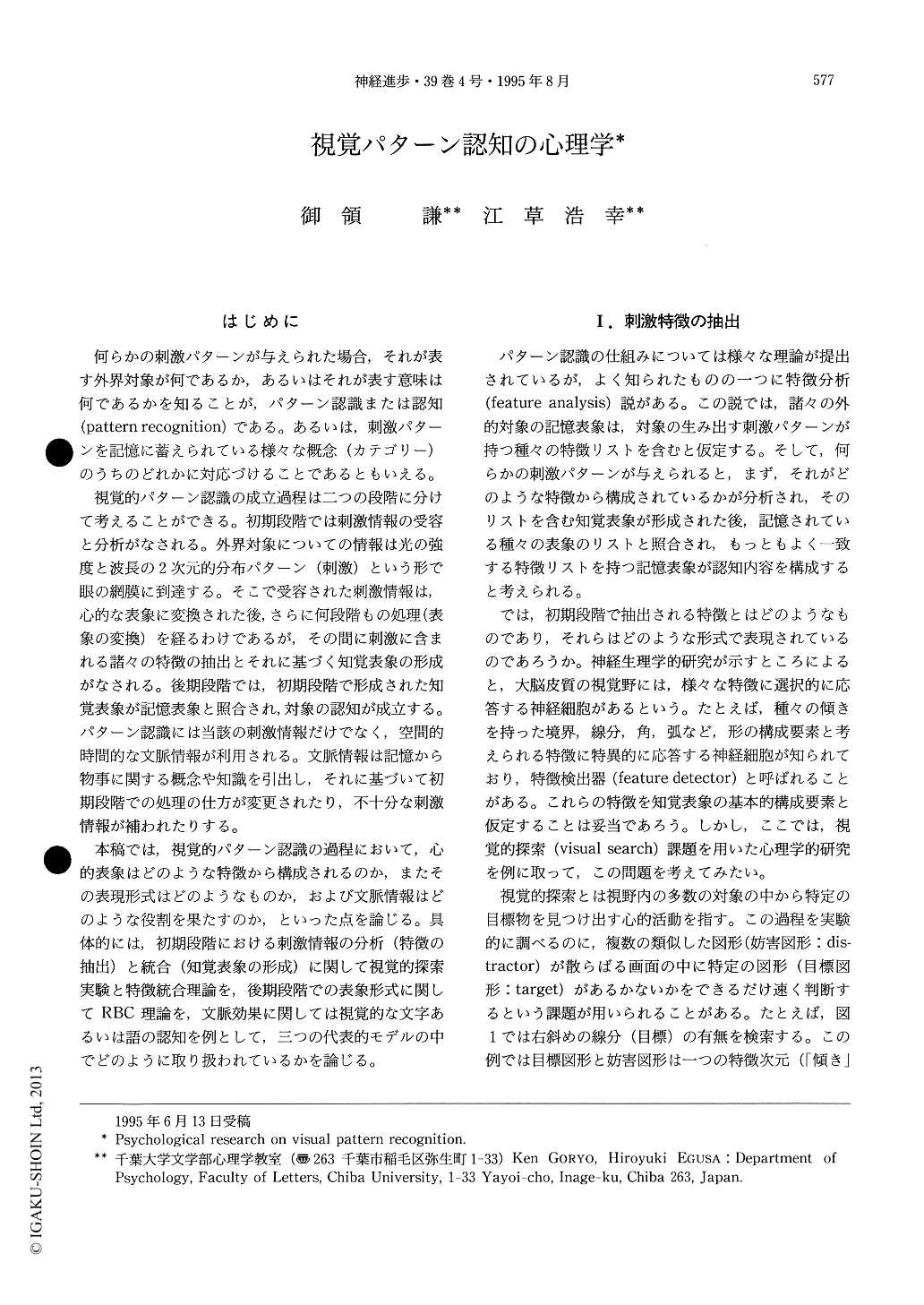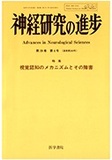Japanese
English
- 有料閲覧
- Abstract 文献概要
- 1ページ目 Look Inside
はじめに
何らかの刺激パターンが与えられた場合,それが表す外界対象が何であるか,あるいはそれが表す意味は何であるかを知ることが,パターン認識または認知(Pattern recognition)である。あるいは,刺激パターンを記憶に蓄えられている様々な概念(カテゴリー)のうちのどれかに対応づけることであるともいえる。
視覚的パターン認識の成立過程は二つの段階に分けて考えることができる。初期段階では刺激情報の受容と分析がなされる。外界対象についての情報は光の強度と波長の2次元的分布パターン(刺激)という形で眼の網膜に到達する。そこで受容された刺激情報は,心的な表象に変換された後,さらに何段階もの処理(表象の変換)を経るわけであるが,その間に刺激に含まれる諸々の特徴の抽出とそれに基づく知覚表象の形成がなされる。後期段階では,初期段階で形成された知覚表象が記憶表象と照合され,対象の認知が成立する。パターン認識には当該の刺激情報だけでなく,空間的時間的な文脈情報が利用される。文脈情報は記憶から物事に関する概念や知識を引出し,それに基づいて初期段階での処理の仕方が変更されたり,不十分な刺激情報が補われたりする。
Recent psychological researches on visual pattern recognition were reviewed selectively. First, feature extraction and integration processes in early vision were discussed mainly in the framework of Treisman's Feature Integration Theory. Secondly, Biederman's Recognition-by-components Theory was discussed as one of the hopeful models which describe internal representations of pattern compo-nents and the usage of them in the processes of pattern matching.

Copyright © 1995, Igaku-Shoin Ltd. All rights reserved.


